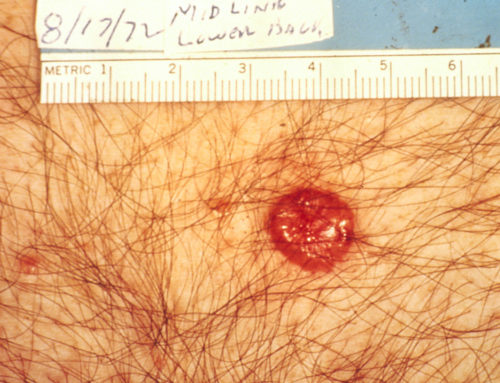Deep tans mean damaged skin and could lead to skin cancer
 Over 400 years ago Copernicus declared the sun was the center of our universe. For some centuries, a light skin defined the “upper class,” while darker skin defined the outdoor, working class. Women of ancient Greece and Rome used lead paints and chalks and later, arsenic-containing compounds to lighten their skin, often with deadly results. Over time however, with changing fashion, life styles and economies, a tanned skin was increasingly sought after for its cosmetic appeal. A sun tan became a symbol of wealth and leisure.
Over 400 years ago Copernicus declared the sun was the center of our universe. For some centuries, a light skin defined the “upper class,” while darker skin defined the outdoor, working class. Women of ancient Greece and Rome used lead paints and chalks and later, arsenic-containing compounds to lighten their skin, often with deadly results. Over time however, with changing fashion, life styles and economies, a tanned skin was increasingly sought after for its cosmetic appeal. A sun tan became a symbol of wealth and leisure.
Indoor tanning first became popular in the 1970’s. Today 20,000-25,000 salons are listed in the yellow pages marketing to 22 million clients per year. The use of tanning devices has now been clearly linked to the development of the two most common forms of skin cancer: basal cell carcinoma (BCC) and squamous cell carcinoma (SCC). Such devices increase the risk of developing these cancers by 1 1/2 to 2 1/2 times. The incidence of developing malignant melanoma, the most dangerous skin cancer, is also increased.
Skin exposure to outdoor sunshine increased as people continued their tanning quest. Increasing ultra violet light (UV) exposure time combined with a decline in the Earth’s protective Ozone layer, created a scenario of skin tan, sunburn and skin cancer. Today, the tanned look, rather than representing health, instead represents skin injury and an increase in the risk of developing skin cancers with frequent serious consequences and occasionally even death.
There are two major side effects of excess UV light exposure:
- Premature skin aging
- Skin cancer
Cosmetic effects include the development of brown age spots, freckled skin, uneven skin tone, sagging skin and wrinkles, wrinkles and more wrinkles.
The immediate effects of UV exposure are increased with skin complexion, color of hair and eyes, skin exposure, environmental reflection (80% by snow, 20% by water), altitude (4% increase for ever 1000 feet increase in elevation) and time of day (65% of UV rays reaches the Earth between the hours of 10 am and 2 pm). Individuals with fair skin, blue eyes and/or red hair are at high risk for UV exposure.
Sunscreens can add a significant element of protection. In 1979, the FDA concluded that sunscreens could help prevent skin cancers and developed the first rating system for sunscreen protection factor (SPF). SPF is equal to the amount of time you can stay in the sun without burning. So if you are sitting in the sun for 10 minutes, apply a sunscreen with an SPF of at least 10. You can sit in the sun for 10×10 minutes without burning.
It is recommended that you use an SPF of at least 15. Use a sunscreen protector that blocks both UVA and UVB rays, i.e. a “broad spectrum” sunscreen. Ensure your sunscreen is water and sweat proof. If you will be in direct sunlight, use a sunscreen with an SPF of 30.
Don’t forget your eyes! UV exposure can damage your vision. Therefore, use sunglasses with UV protection. Use sunscreen to protect your skin. As usual, prevention is the key.
Recommendations to prevent skin damage are:
- Avoid sun exposure during peak hours of the sun rays (10am to 2pm).
- Apply sunscreen (SPF 30) especially to exposed areas of skin.
- Apply sunscreen 30 minutes prior to sun exposure.
- Use sunglasses with UV protection.
- Use a lip balm.
When prevention has failed, here are some tips:
- Apply cool baths/compresses 10-15 minutes, several times per day.
- Apply a soothing lotion.
- Tylenol may be used for pain.
- Don not apply petroleum jelly, ointment, or butter to the injured area.
In northern Wisconsin, summer time is met with anxious anticipation. Enjoy your summer, enjoy the sun, but protect your skin and eyes to enjoy good health in the coming years.


